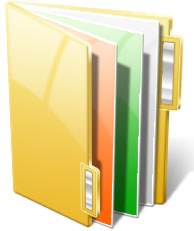Techniques for bonding modern high-performance liners

Language: English
Product Type: Digital
Provider: TAPPI
Shipping: Available for download - Link will be provided in My ComplianceOnline section
In the quest to provide the end user with compression based corrugated containers which are designed for better stacking strength, many linerboards and some mills have developed a range of containerboard liners that have superior ring crush levels. If properly combined, they should yield high-performance top-to-bottom compression characteristics. This property is particularly important as the end use demands of stronger boxes, at reduced fiber levels, that will survive taller than ever before stacking levels in modern high-density warehouses. This also applies to packaging that needs to survive the e-commerce supply chain.
Mills can utilize a number of techniques to achieve higher compression strength, including improved fiber orientation and cross-linking, and high-density formation of mixed paper fibers through high loading rates of their presses. This resulting densification process compresses the fiber matrix tighter, typically increasing the sheet’s density and strength.
These newer engineered sheets as defined above are often less porous than the typical Kraft liners utilized in the past. These tighter sheets with increased fibre-to-fibre bonding Decreased porosity levels can translate into reduced adhesion penetration, potential bonding problems, and box performance failures. Typical adhesives formulated to bond conventional Kraft liners may appear to bond well initially but can delaminate soon after curing due to the liners ability to hold heat longer.
These contemporary containerboards are thought to bind up their moisture differently than standard or more open liners. (This is too much paper physics to explain here). These liners require reduced heat transfer levels and improved preheater wrap techniques to prevent premature adhesive gelatinization and brittle bond formation. This Technical Information Paper offers techniques to successfully combine a range of densified, containerboards produced with OCC/DLK and mixed office waste now available to the corrugated industry.
Customers Also Bought
- Process Control & Instrumentation Simplified
Price: $15 BUY NOW - Process & Utilities Plant Hands-on
Price: $12.5 BUY NOW - Pump - 3 EBook Package
Price: $30 BUY NOW - Rotating Machinery Long Life Basics
Price: $12.5 BUY NOW - The Submersible Pump, Sump Pump and Bilge Pump
Price: $19.99 BUY NOW - PHYSICAL DATA OF CALCIUM CARBONATE-WATER SUSPENSIONS
Price: $35 BUY NOW








